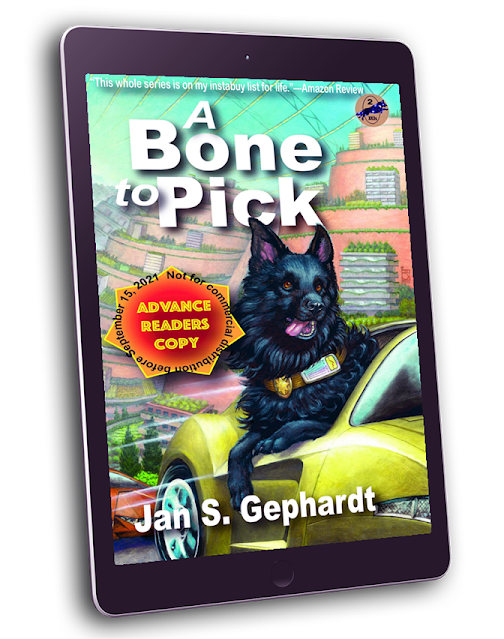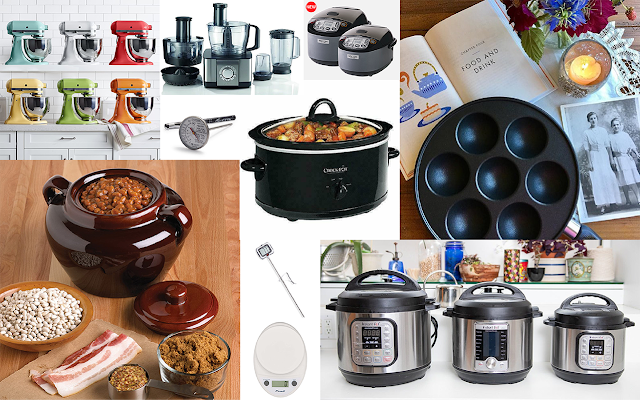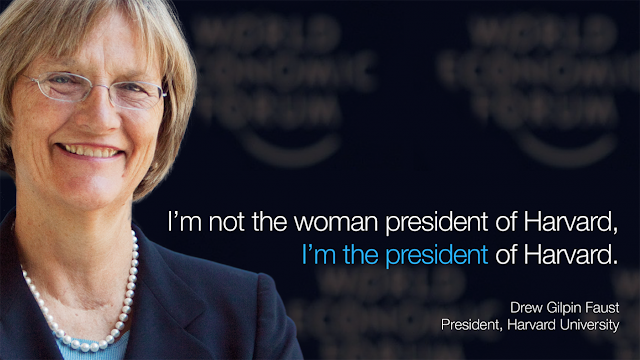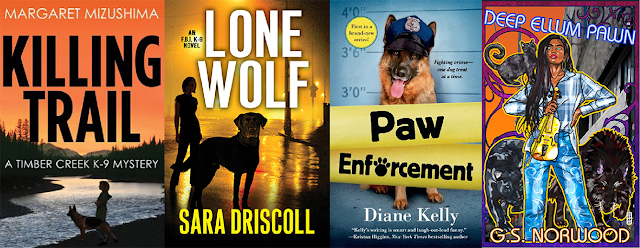By Jan S. Gephardt
I’ve been making ARCs recently.
What does that mean? It means I’ve been assembling an assortment of documents into an early version of my latest book, to create Advance Reader Copies. It’s not exactly parallel to a dress rehearsal for a stage play, but for me it’s a necessary step in the publicity rollout for my science fiction mystery novel A Bone to Pick.
I’ve been blogging a lot in this space recently, about A Bone to Pick. Those posts are another part of the rollout. As basically an Indie writer, I’m trying to build a small press publishing company, Weird Sisters Publishing, with my sister, G. S. Norwood. I may not have to face the kind of “gatekeepers” a writer encounters in traditional publishing. But plenty of other challenges attend every attempt to promote and sell each book we “weird sisters” produce and release.
G. and I decided to share part of our approach to those challenges in this blog post. We know some of our blog subscribers will be more interested in this than others. Perhaps you found G.’s post from last week more interesting. But maybe you’ll enjoy seeing me pull back the curtain on part of our process, and the role that making ARCs plays in it.
 |
| The release date for A Bone to Pick is September 15, 2021. (Cover art ©2020 by Jody A. Lee; 3D effect by Book Brush). |
The Struggle to find Our Kind of Readers
In an earlier post I explored some of the difficulties an Indie or small press faces, when trying to get the attention of reading public. The first thing we had to understand is that “the reading public” isn’t actually our target. A small subgroup of the global population who reads books—that select group of readers who are interested in the specific kinds of stories we write—is the population we need to find.
It’s a search that never ends. This blog is part of how we search. My website and that of Weird Sisters Publishing are other essentials. Reviews, social media interactions, and targeted advertising provide other ways for us to reach out. Check us out: I have an Author Page on Facebook, and so do G and Weird Sisters. I also have a presence on Twitter, LinkedIn, and Goodreads.
I traveled to science fiction conventions for publicity as well as pleasure, until COVID put a temporary halt to that. Last fall I started building a mailing list for followers of my XK9 stories. They receive a monthly newsletter full of insider glimpses, extras, and exclusive freebies.
 |
| The offer still stands: Get The Other Side of Fear FREE when you sign up for my Newsletter! (all artwork ©2020 by Lucy A. Synk). |
The Rollout
Those are all ongoing efforts. The rollout is different. It’s a focused push to let as many of “my kind of readers” as possible know about my new book. That includes advertising. It also includes the series of blog posts we’ve been running. Newsletter updates and excerpts. Changes to our websites.
And, importantly, it includes making ARCs. Because it has taken me so darn long to write the book, and because I’ve been planning a return to science fiction conventions that starts at FenCon, I cut my rollout shorter than would have been ideal, and set my release date for September 15, 2021.
The Kindle version of A Bone to Pick is available for presale now, in both the United States and the United Kingdom. I’ve offered a discounted price for the presale: $2.99 in the U.S. (after release it’ll go up to $4.99), and £2.12 in the UK (post-release, that’ll go up to £3.84).
I wanted, if possible, to have printed copies of the new book available at FenCon, which is scheduled for September 17-19. My proofreader is still carefully combing through the manuscript for errors. But the shortened time frame means I should have been making ARCs weeks ago, not now.
| I go to science fiction conventions such as Capricon (where this was taken) and FenCon as part of my ongoing outreach. (Photo ©2020 by Tyrell E. Gephardt). |
Making ARCs
So, okay. How hard can that be? What goes into making ARCs? Well, a finished-for-real manuscript, for one! That was the hardest and longest part.
I also have created a Directory of names, places, and acronyms in the book. That was a reader request. I’ve also included one for the first book, in current versions of What’s Bred in the Bone. Both are large, sweeping space opera mysteries, full of exo-terrestrial and multicultural names, police-style acronyms, and a rather large cast of characters. The readers were right!
Thank goodness, I’ve had the cover already created for a while now. But I needed to differentiate it from post-release “official” copies of the book, so I created an identifying element to the cover design. Yes, I could simply have overprinted “ADVANCE READERS COPY” on the cover, but I think this looks better.
What else goes into an ARC? Well, there’s all the “book stuff” you need for the real thing. A title page, with our Weird Sisters Publishing logo and URL. The page with copyright notices. Vellum, the publishing program I use, automatically creates a Table of Contents, but I needed to compose the Dedication’s wording. I added my bio for the About the Author page (with a photo), and there was other material needed for the end of the book. Did you know I also specifically designed the “Wolf Tracks” ornamental break we use in all of the XK9 books? That needed to go in there, too.
 |
| Here are some of the elements that went into making ARCs for A Bone to Pick. (Credits below). |
Why do I need ARCs?
Advance Reader Copies go out ahead of the release date to my all-important Street Team—and the sooner, the better! Street Team members are people who have signed up to not only be on my mailing list and get my newsletter. They also receive free Advance Reader Copies before release date. In return, they write honest reviews of the book, and post them to Amazon on Release Day. ARCs should go out to current Street Team members today!
If you are interested in being on my Street Team, sign up for my newsletter! You’ll receive more information in the follow-up emails. It’s not too late to get an A Bone to Pick ARC of your own!
Other ARCs go to reviewers, bloggers on review sites, and other authors willing to consider giving me a cover quote. I’m in the process of contacting them now. ARCs are just a part of what goes into the “entrepreneurial” side of being an independent writer. But for me, making ARCs is the step that makes it “real.”
Yes, the book is finished at last! It says what I want, and the Brain Trust has reassured me it’s ready. And yes, others will read it soon! For me, that’s at least as big a thrill as writing THE END.
 |
| Making ARCs is an important part of the rollout process before the release of A Bone to Pick. (Cover art ©2020 by Jody A. Lee; 3D effect by Book Brush). |
IMAGE CREDITS
The cover painting for A Bone to Pick is ©2020 by Jody A. Lee. The artwork on my Newsletter offer, including the cover of The Other Side of Fear, is ©2020 by Lucy A. Synk. The photo of me at Capricon 40 with all the S.W.A.G. on my autograph table is ©2020 by Tyrell E. Gephardt. In the montage of “ARC ingredients,” the photo of me is ©2017 by Colette Waters Photography. The Weird Sisters Logo and the “Wolf Tracks” ornamental break were designed by me, and are ©2019 by Weird Sisters Publishing LLC. The photo of the Directory’s first page is a screen capture of the preview in Vellum. The 3-D effects on both the regular edition and ARC images are by Book Brush. If you wish to reblog or repost any of these images, please do so with an attribution and a link back to this post. Thank you!



















